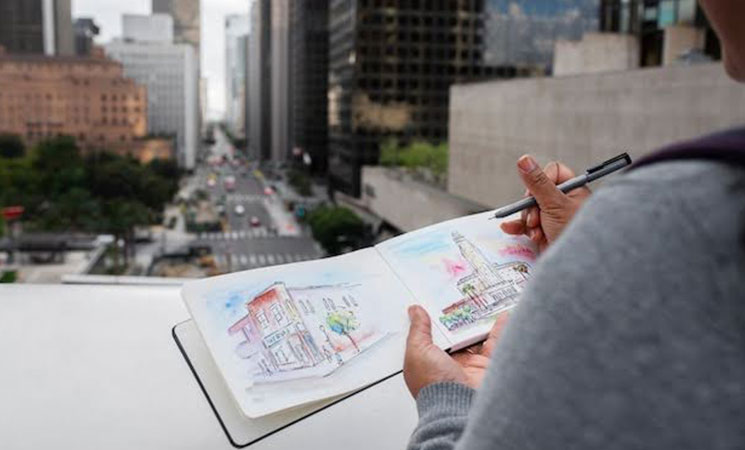At the intersection of growth and innovation, urban planning faces crucial decisions. As urban landscapes expand, the urgency for forward-thinking and inventive strategies intensifies. The cities of the future must not only embrace new trends and technologies but also transform in ways that sustain and enhance livability. This shift goes beyond mere construction; it is about redefining the essence of urban environments to better accommodate their dwellers.
The critical role of innovation in urban planning cannot be emphasised enough. Conventional tactics fall short when tackling the intricate issues of today’s urban settings. Planners are compelled to adopt cutting-edge technologies and approaches, crafting cities that excel in efficiency, resilience, and adaptability to impending shifts. Such proactive planning is vital for cultivating urban spaces that endure over time.
Additionally, the emphasis on sustainability and quality of life remains paramount. Urban planners are tasked with forecasting the long-term consequences of their choices on both the ecosystem and resident well-being. By prioritising these elements, cities can transcend mere residential and commercial hubs. They evolve into vibrant, thriving communities that promote innovation and improve the collective quality of life.
Smart Cities Harnessing Technology for Enhanced Urban Life
Smart cities embody the next step in urban evolution, striving to elevate the living standards of their inhabitants. By integrating technology and data into the urban fabric, these cities are poised to revolutionise everyday life. Leading this charge are the Internet of Things (IoT), artificial intelligence (AI), and big data analytics, each offering innovative solutions to common city challenges.
Consider IoT devices: these gadgets gather and control data on everything from traffic patterns to power use, providing real-time insights that lead to better resource management and faster problem-solving. Meanwhile, AI delves into this data, spotting trends and forecasting future needs, thus empowering urban planners with the knowledge to make smart decisions.
Big data analytics plays an essential role, too. It pulls together information from diverse sources, offering a deeper understanding of resident needs and behaviours. Armed with this knowledge, cities can craft precise interventions, like fine-tuning bus routes or boosting safety measures, making urban spaces not only smarter but more attuned to the people they serve.
Sustainable Infrastructure Building the Foundation for Future Cities
At the heart of tomorrow’s urban landscapes lies sustainable infrastructure, a key pillar for the expanding cities of the future. As urban areas grow, integrating environmentally sound and resilient frameworks becomes not just beneficial but essential. These practices and materials are woven into the fabric of modern urban planning, aiming to bolster longevity and minimise ecological footprints.
A crucial element of this eco-friendly architecture is the adoption of green building materials. Recycled steel and low-emission concrete, for instance, play a significant role in diminishing the construction sector’s carbon output. Moreover, the integration of renewable energy solutions, such as solar panels and wind turbines, empowers cities to pivot away from traditional fossil fuels.
Efficient water management also stands as a cornerstone of sustainable urban infrastructure. Developing systems that adeptly handle water resources, from rainwater harvesting to wastewater recycling, is crucial. These methods do more than conserve water—they alleviate pressure on existing supplies, paving the way for a sustainable urban future.
Image source: freepik.com
Human-Centred Design Prioritising People in Urban Planning
At the heart of modern urban planning lies the principle of human-centred design, which places the needs and well-being of residents at the forefront. This approach aims to craft urban spaces that boost livability, workability, and sustainability, thereby fostering cities that are inclusive and delightful for all inhabitants.
Human-centred design often manifests through the development of mixed-use areas. These vibrant spaces blend residential, commercial, and recreational zones, enabling people to live, work, and enjoy leisure activities all within the same vicinity. This integration not only cuts down on lengthy commutes but also cultivates a strong sense of community and belonging among residents.
Moreover, public spaces play a central role in human-centred urban design. Parks, plazas, and streets designed for pedestrians offer locals serene spots to unwind, socialise, and stay active. These areas are crucial in enhancing the well-being of the community and injecting life and energy into cityscapes.
The Role of Certification in Sustainable Development
In the realm of urban development, certification stands as a fundamental force, ensuring that projects not only align with legislative mandates but also embrace sustainability objectives. Individuals like Kyrillos Ghaly, a seasoned building certifier, are at the forefront of this movement. They collaborate extensively with clients, consultants, and local councils to guarantee that these rigorous standards are met, thereby upholding the integrity and safety of construction endeavours.
Kyrillos Ghaly’s contributions to sustainable development are noteworthy. His dedication to enforcing stringent guidelines ensures that urban spaces not only remain safe but also environmentally sound. Such steadfast commitment to quality assurance underpins the enduring success of urban development projects, making our cities better places to live.
Moreover, certification acts as a yardstick for the sustainability of urban projects. By complying with recognised standards, developers showcase their dedication to environmental stewardship, earning the confidence of stakeholders. This commitment not only bolsters the project’s reputation but also furthers the overarching aim of fostering more sustainable urban landscapes.
Visionary Leaders Steering Urban Development
In the realm of urban development, the influence of seasoned experts is undeniable. These professionals leverage their deep knowledge and past experiences to craft forward-thinking, environmentally sound urban spaces. Among them, Adam Beck, the Executive Director of Smart Cities Council Australia and New Zealand, stands out for his commitment to integrating smart city concepts effectively.
Adam Beck champions a hands-on approach to urban innovation, prioritising human-centric factors like livability, workability, and sustainability. His rich experience in sustainability and urban renewal initiatives positions him as a prominent voice in this sector. Beck consistently emphasises the importance of practical results over mere theoretical discussions, advocating for strategies that bring tangible improvements to urban life.
Similarly, Campbell Hanan, Group CEO of Mirvac, brings his extensive background in property and funds management to the forefront of sustainable urban planning. With over three decades of industry experience, Hanan has been instrumental in advancing sustainable development initiatives. Under his guidance, Mirvac has become synonymous with resilient, cutting-edge urban projects that resonate with current trends in the industry.
Technological Innovations Shaping the Future of Urban Planning
The landscape of urban planning is undergoing a transformative shift, thanks to the surge in technological advancements. Cutting-edge tools like the Internet of Things (IoT), Artificial Intelligence (AI), and big data analytics are at the forefront, crafting smarter, more efficient urban environments. These innovations are not just enhancing city life but are crucial in tackling the complexities of urbanisation and elevating the quality of life for its inhabitants.
Consider IoT devices: these gadgets are adept at monitoring and controlling a myriad of city functions, from the ebb and flow of traffic to the intricacies of energy use. The ability to track these elements in real-time fosters a more adept management of resources and enables swift reactions to any emerging issues. Meanwhile, AI excels in sifting through immense data sets to unearth patterns and forecast future trends, thereby equipping urban planners with the insights needed to make strategic, data-driven decisions.
The role of big data analytics in refining the operations of smart cities is profound. By aggregating and scrutinising data from diverse sources, urban centres can decode the complex needs and behaviours of their populations. Armed with this knowledge, cities can tailor solutions that significantly enhance aspects of urban life, from optimising public transport networks to bolstering safety protocols.
Challenges and Opportunities Navigating the Future of Urban Planning
As urban landscapes swell, the future of urban planning teeters between daunting challenges and golden opportunities. City planners are at the forefront, grappling with burgeoning populations, the threats of climate change, and the complexities of resource management. Their mission? To forge paths toward sustainable development through innovative solutions.
The surge in urban populations presents a critical challenge. With more individuals flocking to cities, the strain on housing, transportation, and public services intensifies. Urban planners are tasked with crafting strategies that not only support this growth but also enhance the quality of life for all city dwellers. This involves initiatives like expanding affordable housing and upgrading public transit systems.
Moreover, climate change looms large, threatening urban infrastructure with rising temperatures, escalating sea levels, and more frequent extreme weather events. Urban planners must champion resilient infrastructure and sustainable practices to shield our cities. This effort includes the integration of green building materials and the adoption of renewable energy sources in urban development projects.
Charting the Path Forward for Urban Development
The horizon of urban planning and development gleams with potential, yet it hinges on a steadfast dedication to innovation, collaboration, and sustainability. By integrating cutting-edge technologies and methodologies, urban planners are poised to sculpt cities that are not only efficient but also resilient and adaptable to forthcoming shifts. This progressive mindset is vital in cultivating urban spaces that endure over time.
Moreover, the success of urban development initiatives critically depends on collaboration. Planners must forge strong partnerships with all stakeholders, including residents, businesses, and governmental bodies, to tailor their projects to the community’s needs. Such cooperative efforts cultivate a shared sense of investment and participation, which in turn fuels more enduring and successful outcomes.
At its core, urban planning strives to elevate the living standards within cities. By focusing on human-centred design, sustainable infrastructure, and principles of smart cities, planners are equipped to create urban environments that are not only thriving and dynamic but also robust. The future of urban development rests on our capacity to innovate and adapt, envisioning cities that are truly designed for the ages.













